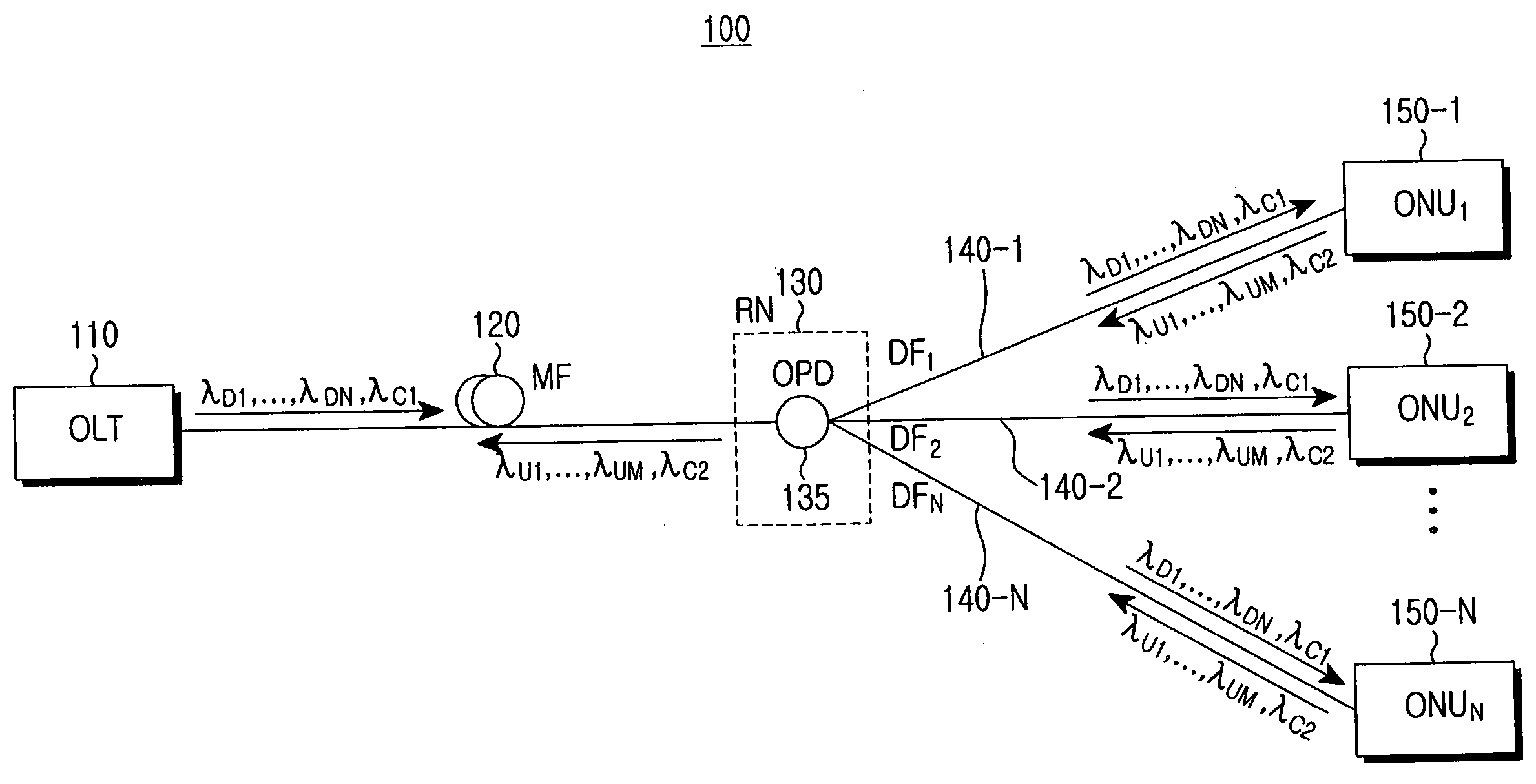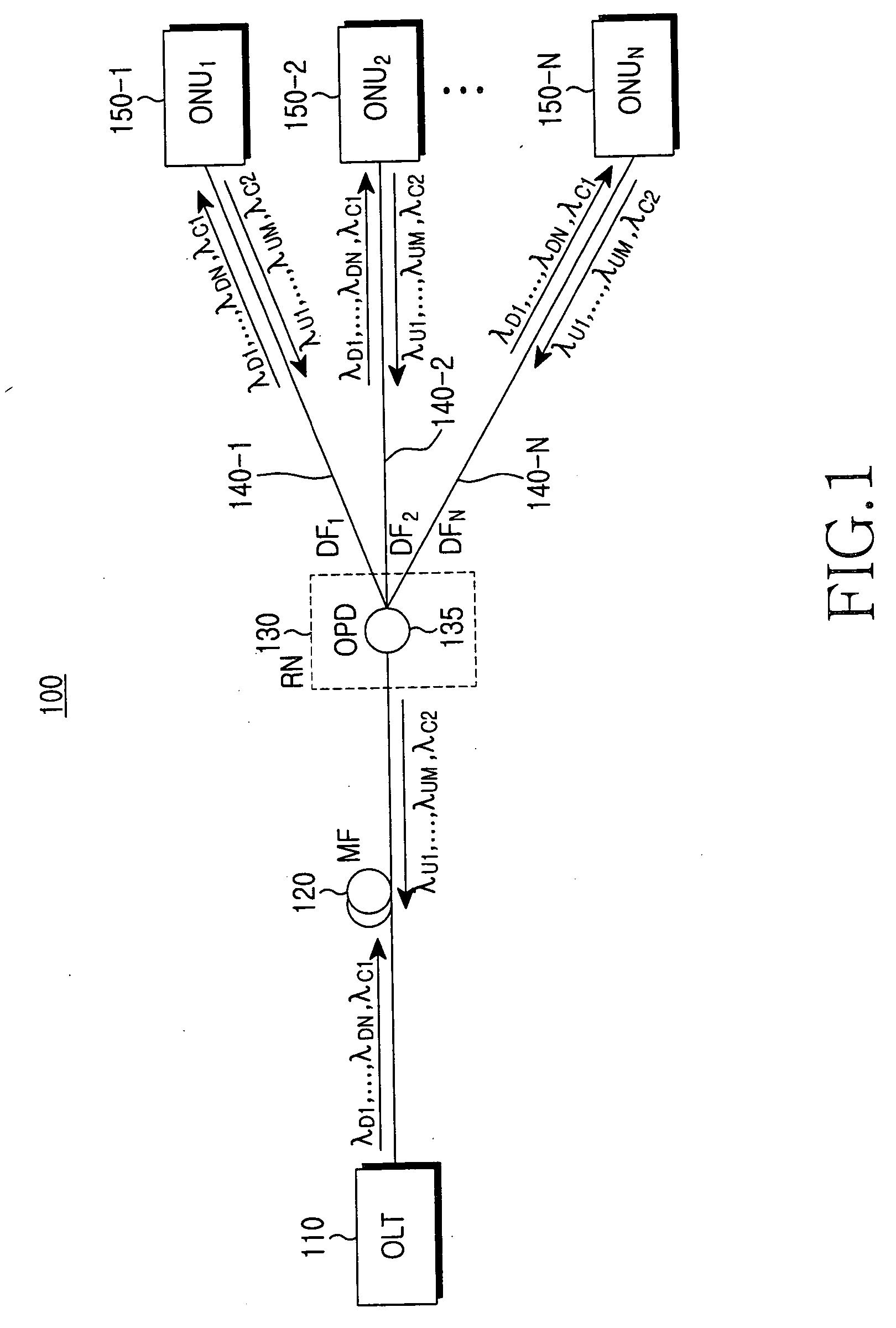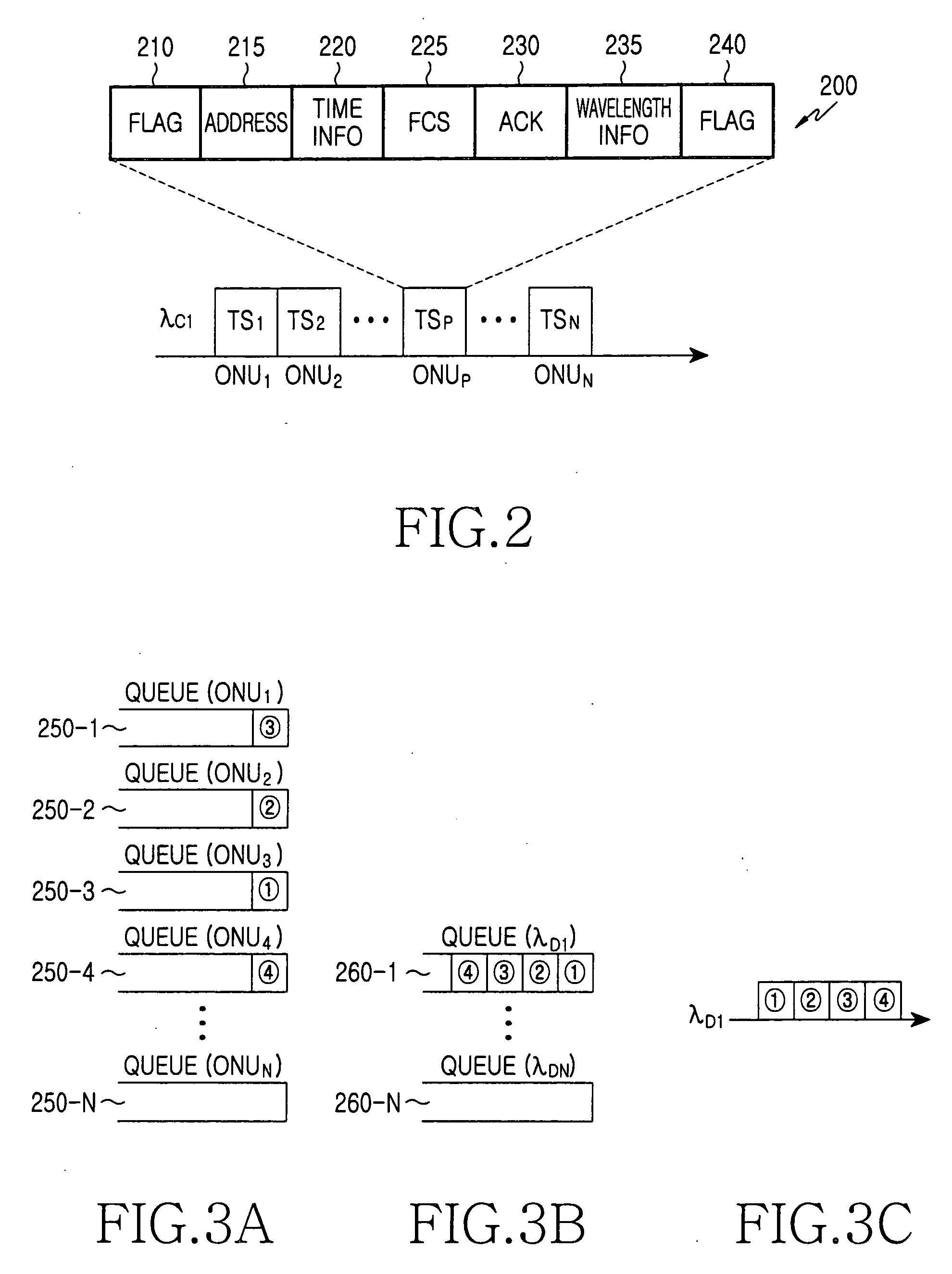Method for operating wavelength-division-multiplexed passive optical network
a wavelength-division multi-plexed, optical network technology, applied in the direction of frequency-division multiplex, multiplex communication, star/tree network, etc., can solve the problem of wasting bandwidth, requiring complicated media access control (mac) protocol, and limited number of subscribers, so as to prevent bandwidth waste
- Summary
- Abstract
- Description
- Claims
- Application Information
AI Technical Summary
Benefits of technology
Problems solved by technology
Method used
Image
Examples
Embodiment Construction
[0026] A preferred embodiment of the present invention will be described with reference to the accompanying drawings. In the following description, well-known functions or constructions are not described in detail as they obscure the invention in unnecessary detail.
[0027]FIG. 1 illustrates a wavelength-division-multiplexed passive optical network (WDM-PON) 100 according to a preferred embodiment of the present invention. Referring to FIG. 1, the WDM-PON 100 includes an optical line terminal (OLT) 110, a remote node (RN) 130, which is connected to the OLT 110 via a main optical fiber (MF) 120, and first through Nth optical network units (ONUs) 150-1 through 150-N, which are connected to the RN 130 via first through Nth distribution optical fibers (DFs) 140-1 through 140-N. The first through Nth ONUs 150-1 through 150-N are connected to the OLT 110 via the RN 130 on a point-to-multipoint basis. The OLT 110 downstream-transmits downstream data and control information using first throu...
PUM
 Login to View More
Login to View More Abstract
Description
Claims
Application Information
 Login to View More
Login to View More - R&D
- Intellectual Property
- Life Sciences
- Materials
- Tech Scout
- Unparalleled Data Quality
- Higher Quality Content
- 60% Fewer Hallucinations
Browse by: Latest US Patents, China's latest patents, Technical Efficacy Thesaurus, Application Domain, Technology Topic, Popular Technical Reports.
© 2025 PatSnap. All rights reserved.Legal|Privacy policy|Modern Slavery Act Transparency Statement|Sitemap|About US| Contact US: help@patsnap.com



